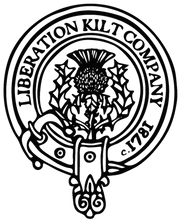Tartan Collection
Tartan isn’t just a fabric—it’s an ancient mystery.
The mystery begins with the unearthing of Chechen Man—a tartan-clad Bronze Age Celt found in the scorched sands of the Taklamakan Desert, north of Tibet. A place so forbidding its name literally means, “You may enter, but you will never leave.”

How on earth did he end up there?
One theory is that tartan originated in the Caucasus, north of the Black Sea. As the Celts migrated, they split—some heading west through Central Europe to the British Isles, others trekking east toward China.
Fast forward to the 18th century: by now, tartan had become the fabric of Gaelic culture, woven deep into the clan system. But during James Stuart’s 1714 rebellion against the English crown, it became something more—a symbol of defiance. After the Battle of Culloden in 1746, tartan was banned outright: irrefutable proof of culture’s soft power.
Since then, tartan has been claimed by both establishment and anti-establishment forces—from royal households to punk rockers, from regimental uniforms to rebellious youth.
We’re taking tartan in a bold new direction—as a catalyst for social change.
At the heart of our company lies a collection of tartans that promote global causes. Each one is rich with symbolism, its colours and lines reflecting the hopes and fears of contemporary movements. Beautiful patterns that happen to send a message—decoded in conversation.
Beyond a show of solidarity or personal expression, our tartans function as a ruse in the best sense—sparking conversations that may lead to great things.
Proud owners of our tartans include Peter Gabriel, Arundhati Roy, Toomaj Salehi, Lianne La Havas, Martina Navratilova, and Eliud Kipchoge.
We're planning a full launch of tartan scarves, kilts and throws in 2026. Stay tuned!
THE TARTANS

